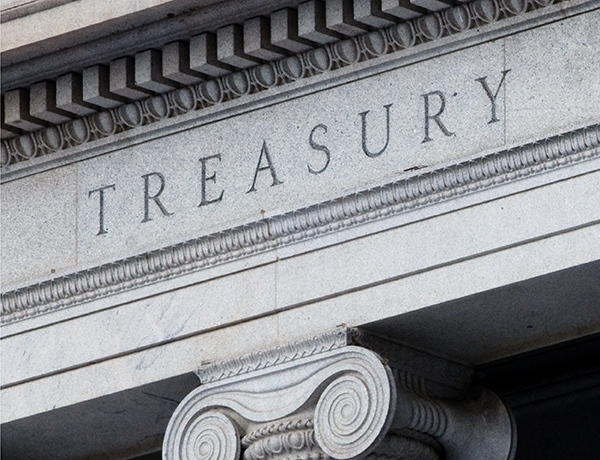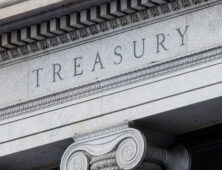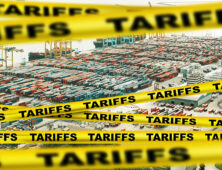Today’s Mortgage Rates in May 2025

May 19, 2025
🏠 Strategy and Outlook: Stay Defensive, Lock Smart
Mortgage rates continue to face upward pressure as markets search for clarity and confidence in the broader economic picture. While there may be brief windows of opportunity to lock in lower rates on favorable days, we continue to recommend a locking bias in this environment.
Volatility remains elevated, and timing the market has become increasingly difficult. For clients purchasing or refinancing in the near future, the best strategy is to work closely with a trusted mortgage advisor, consider options like temporary buydowns, and be ready to act quickly when pricing dips.
1️⃣ U.S. Treasury Downgrade Sends Ripples Through Mortgage Markets
For decades, U.S. Treasuries have been regarded as the safest and most stable investment in the global economy. That perception is starting to shift.
A recent downgrade in the U.S. credit outlook has rattled investors, prompting concern over our government’s ballooning federal deficit, which now approaches $37 trillion. Compounding this are rising interest rates, which have dramatically increased the cost of servicing existing debt. As the government rolls over maturing bonds, it’s now doing so at significantly higher rates—effectively crowding out investment in other sectors and increasing the long-term cost of borrowing.
Markets reacted swiftly. Mortgage rates inched higher on the announcement, though the full impact will play out over time as institutional investors adjust their models to factor in greater risk. The higher yield now required to attract investment means that upward pressure on long-term mortgage rates could persist until fiscal confidence is restored.
2️⃣Consumer Sentiment Drops to Second Lowest Level on Record
New data from the University of Michigan’s Consumer Sentiment Index shows that confidence in the U.S. economy has plunged—hitting the second lowest point since tracking began. The culprit? Inflation expectations and rising concerns over tariffs.
Recent tariff announcements, especially those targeting Chinese electric vehicles and key raw materials, have stoked fears of supply chain disruptions. Many consumers remember the empty shelves and price spikes of the pandemic era—and fear a repeat. If critical goods become harder to source, expect prices to surge and consumer spending to fall further. This is a critical watchpoint as the economy navigates uncertain terrain.
3️⃣Housing Market Activity Stalls as Buyers Wait on Rates
With mortgage rates rising and affordability stretched thin, more prospective homebuyers are hitting the pause button. According to Redfin and Realtor.com data, the number of homes under contract has declined for four straight weeks, and new mortgage applications fell again last week.
High interest rates have sidelined many would-be buyers who are unwilling to lock in at today’s rates. At the same time, sellers who secured ultra-low rates during the pandemic are reluctant to list their homes and give up that advantage. The result? A standoff, and a housing market that is freezing over in many parts of the country.
Builders are beginning to respond with greater incentives—including rate buydowns and price reductions—but until we see a meaningful decline in rates or a shift in Fed policy, activity is likely to remain sluggish.
May 12, 2025
🏠 Mortgage Rate Watch: The Trend Has Turned
Mortgage rates have officially broken out of their long-term downward trend and are now moving higher. With volatility still high and inflation concerns growing, we’re maintaining a locking bias for those in the market. The path forward remains uncertain, and rate dips may be brief.
In a market like this, clarity matters. If you’re buying, refinancing, or just curious about your options, now is the time to get a second opinion. Even a slight improvement in your rate could mean thousands in savings over the life of your loan.
🔍 Bottom Line
We’re entering a high-stakes season for the U.S. economy. The full impact of tariffs hasn’t hit consumers yet, but it’s coming. If the Fed misjudges the moment, we could find ourselves fighting inflation with the wrong tools—and missing the bigger risk of a slowdown. Meanwhile, mortgage rates are trending up, making it more important than ever to stay informed and act strategically.
1️⃣ A Symbolic Win, But Not a Game-Changer
The Trump administration recently announced its first trade agreement with the United Kingdom—a noteworthy step, though modest in size. The UK represents just under 4% of total U.S. trade. But what makes this deal strategically important is that the U.S. already maintains a trade surplus with the UK, meaning we export more to them than we import. In President Trump’s transactional view of trade, that’s a win—boosting U.S. GDP by selling American-made goods abroad.
This aligns with his broader vision of reshaping global trade relationships to favor the U.S. by prioritizing deals that reduce our trade deficits. But with a stated goal of securing 200 bilateral trade deals, this agreement—while welcome—is only a small piece of a much larger and more complex puzzle.
2️⃣📉 The Fed Stays Put—But Should They Have?
This week, the Federal Reserve opted to leave interest rates unchanged, despite growing economic headwinds from the tariff war. Fed Chair Jerome Powell continues to walk a tightrope between inflation control and economic stability. The problem? Tariffs—like the 145% duties now being applied to some Chinese imports—act as a tax on consumers and businesses. And interest rate hikes don’t solve tax-driven inflation.
History hasn’t been kind to the Fed when it comes to timing. They often hold rates too high for too long or keep them too low until inflation flares up. If Powell waits too long to shift course, the economy could tip into recession. With the labor market showing signs of cooling and consumer confidence dropping, the Fed’s delayed reaction could prove costly.
3️⃣🚢 Tariffs Are Arriving—Literally
Cargo ships loaded with tariff-hit goods are now docking on the West Coast, bringing with them price increases that will soon show up on store shelves. Although April’s inflation reports won’t reflect these changes yet—many companies stockpiled inventory ahead of tariff enforcement—the real impact is expected to show up in the next four to six months.
Business owners are already warning of price hikes, which could push inflation higher through the summer. That spells trouble for interest rates, as inflation is the bond market’s worst enemy. Mortgage rates tend to rise when inflation heats up, putting additional pressure on affordability in an already strained housing market.
May 5, 2025
Confidence Cracks, But Is Help on the Way?
When consumers lose confidence, the ripple effect can be felt across the entire economy. The April Consumer Confidence Index dropped to its lowest level since the pandemic shutdowns—a clear warning sign that many Americans are growing uneasy about their financial futures. That anxiety is showing up in the housing market: more and more potential home sellers are pulling their listings, discouraged by high mortgage rates, shaky buyer demand, and general uncertainty.
But here’s the twist: mortgage rates have recently shown hopes of wanting to fall, and if the trend continues, it could be the catalyst that reignites activity across the housing market. Lower rates give buyers more purchasing power and give sellers confidence they can both sell and rebuy affordably. We’re not there yet—but the door is beginning to crack open.
📊 April Jobs Report Surprises—But Don’t Be Fooled
Friday’s Bureau of Labor Statistics (BLS) report showed 177,000 new jobs added in April, far exceeding the 133,000 that economists predicted. At first glance, this seems like bad news for mortgage rates, since strong job growth typically delays Fed rate cuts. As a result, rates ticked higher following the report.
But don’t be too quick to draw conclusions. Underneath the headline number, there are signs of softness in the labor market. Temporary employment is falling, job openings are declining, and wage growth is cooling. These are classic early indicators that broader job losses may be coming. Like Wayne Gretzky once said—great players skate to where the puck is going, not where it’s been. If the Fed plays offense instead of reacting late, a rate cut could still be in the cards this summer.
The Fed Can’t Fix Tariffs—And That’s a Big Problem
The Federal Reserve’s primary tools—raising or cutting interest rates—are designed to stimulate or restrict demand. But they can’t stop the kind of inflation that’s now creeping in from tariffs. Tariff-driven inflation is different. It doesn’t increase corporate profits. It doesn’t push up wages. It acts like a tax on the consumer, pulling money out of the economy and into government coffers.
That’s why this form of inflation is deflationary in disguise. It hurts consumer spending, slows the economy, and makes it harder for businesses to raise wages. And it puts the Fed in a tough position—one where cutting rates may actually help stabilize growth without fueling more inflation.
📉 Mortgage Rate Watch: Holding the Line
Mortgage rates are still battling resistance at their 200-day moving average—a key technical indicator that traders watch closely. For now, they’ve failed to break below. That means locking in your rate remains the safer play in the short term.
But all eyes are on the Federal Reserve’s meeting this Wednesday. If the Fed softens its tone or signals future cuts, we could see rates begin a more decisive move downward.
🔍 Bottom Line
Consumer confidence is shaky, but relief may be on the horizon. The job market isn’t as strong as it looks, tariffs are quietly undermining growth, and the Fed may still have a window to act. If you’re a homebuyer or refinance shopper, now is the time to pay close attention—opportunities could be just around the corner.
Apr 28, 2025
Until next week — stay smart, stay steady, and remember: your mortgage strategy matters more now than ever.
1️⃣The Hidden Fed Mandate: Protect the Dollar at All Costs
While the Federal Reserve’s dual mandate is well known — full employment and stable inflation — there’s a third, often unspoken mission: preserve the dominance of the U.S. dollar as the world’s reserve currency.
Why does this matter?
Since the trade war escalated, the U.S. dollar has quietly lost value against a basket of global currencies. At the same time, foreign demand for U.S. Treasuries has weakened — especially from former heavyweight buyers like China and Japan. This is a major concern, because global demand for our debt helps keep borrowing costs low and economic power in America’s hands.
Now, here’s the kicker: Rate cuts weaken the dollar further, which makes the Fed reluctant to oblige the Trump administration’s push for looser policy.
Higher rates, on the other hand, defend the dollar’s strength — but at the cost of market pain and rising mortgage rates.
So, while the White House calls for cuts to boost growth, the Fed is quietly fighting a currency war of its own. And yes, it’s creating a tug-of-war that’s destabilizing markets — and pushing mortgage rates higher.
2️⃣Tariff Trouble: The War No One Can Win?
In a dramatic shift, President Trump has begun to ease the steep tariffs imposed on Chinese imports earlier this year. The administration had raised tariffs to an unprecedented 145%, but mounting economic pressures have prompted a partial rollback. Treasury Secretary Scott Bessent acknowledged that these tariffs were “unsustainable” and hinted at de-escalation, though formal negotiations with Beijing remain uncertain.
China, for its part, has responded cautiously. While publicly denying ongoing trade talks, Beijing has quietly exempted certain U.S. goods, such as semiconductors and medical equipment, from its retaliatory tariffs, signaling a willingness to ease tensions without appearing to concede.
Despite these tentative steps, the economic damage is already evident. Ocean-container shipments from China to the U.S. have plummeted by over 60%, disrupting supply chains and threatening industries dependent on Chinese imports. Small businesses, particularly those reliant on seasonal goods, face significant challenges as critical manufacturing windows close.
Economists are increasingly alarmed. A recent Bloomberg survey indicates a 45% chance of a U.S. recession within the next year, up from 30% in March. The International Monetary Fund has downgraded U.S. growth projections, citing the escalating trade war and high policy uncertainty.
The takeaway? Initiating a trade war without a clear exit strategy can have far-reaching consequences, disrupting not only political capital but also lives, jobs, and global economic confidence.
3️⃣Empty Shelves, Rising Prices: Déjà Vu from 2020?
Post-Liberation Day, imports from China have plunged. Port data and freight indexes show a sharp drop in container deliveries, especially on the West Coast. Manufacturing orders are drying up. Shipping volumes are slowing.
If this sounds familiar, it’s because we lived through it in 2020.
Back then, Covid shut down Chinese factories. This time, it’s geopolitics. And the result could be eerily similar: supply shortages at major retailers like Walmart and Target, spiking prices for everyday goods, and pressure on inflation that pushes mortgage rates up even further.
Inflation isn’t just about oil or wages anymore. It’s also about ships, shelves, and strained supply chains.
Rate Outlook: Volatility Reigns Supreme
In the middle of all this uncertainty, mortgage rates are caught in the storm.
Rates remain highly volatile, with intraday swings that make it challenging to know when to lock or float. In recent weeks, we’ve seen rate sheets change multiple times in a single day — a clear signal of just how reactive lenders are to shifting economic headlines.
Now, mortgage rates are flirting with a critical technical level — the 200-day moving average. While floating remains risky given the high volatility, a decisive break beneath this key trend line could open the door to a meaningful move lower in rates.
Until that break is confirmed, locking ahead of additional market swings remains the safer approach for most borrowers.
Final Thought: Stay Nimble, Stay Informed
Markets hate uncertainty — and right now, we have it in spades. From currency wars to container shortages, every headline seems to push rates in a new direction. That’s why weekly insights like this one matter more than ever.
Whether you’re a homebuyer, a seller, or someone waiting for the right time to refinance, we’re here to cut through the chaos — and help you make confident, informed decisions.
Apr 21, 2025
Bottom Line: Risk Remains, But So Does Opportunity
The current market is one of the most unpredictable in recent memory. With stocks swinging wildly, global trade in flux, and real estate sentiment shifting, now is not the time for complacency.
🔹 Locking in your mortgage rate now could protect you from higher costs later.
🔹 But be alert—any Fed pivot or de-escalation in tariffs could create a surprise rate dip.
🔹 Watch closely. React quickly. The next opportunity might be just a headline away.
1️⃣Financial Markets Rattled by “Retribution Day” Tariffs
We’re entering a new era of global trade policy—one marked not by diplomacy, but by retaliation. Following what’s now been coined “Retribution Day,” the U.S. and key trading partners have implemented sweeping tariffs that are shaking the foundation of international commerce. With a 90-day reprieve clock ticking, markets are struggling to price in the full impact.
Even the Federal Reserve appears blindsided by the scale and swiftness of the changes. Their models didn’t account for this level of disruption. If the Fed didn’t see it coming, neither did corporate America. We’re now entering a phase where producers must absorb higher input costs or pass them on to consumers—an equation that feeds inflation and squeezes corporate profits at the same time.
Manufacturing stocks have been hit hard. The Dow Jones Industrial Average is down nearly 9% from its recent high, and tech, which relies on globally sourced components, is facing a cold front after a record-setting Q1.
2️⃣Zillow’s Shock Forecast: Home Prices to Fall
In a dramatic pivot, Zillow has now forecasted a decline in national home values from March 2025 through March 2026—a rare prediction from a platform typically optimistic about real estate. This shift reflects the harsh economic sentiment that’s emerged in just the last few weeks.
Why does this matter? When people see the value of their stock portfolio drop by 10–15%, they tighten their wallets. Trillions in paper wealth have been erased in less than a month. When wealth contracts, so does spending—and that includes big-ticket items like homes.
We’re already seeing early signs of buyer hesitation. If prospective buyers believe homes will be cheaper a year from now, demand drops today. This psychology can become self-fulfilling and dangerous. And remember: the Fed does not want to see widespread home depreciation. That leads to reduced consumer confidence, falling renovation and retail spending, and eventual job losses in real estate-adjacent industries.
3️⃣Trump vs Powell: The Central Bank Smackdown
The White House is once again at odds with the Fed. President Trump’s recent jab—”Powell’s termination can’t come soon enough”—signals an intensifying feud that’s becoming a headline risk in and of itself.
Fed Chair Jerome Powell is in a no-win situation. He must choose between tackling inflation (which may rise due to tariffs) or cutting rates to boost a slowing economy. Welcome to stagflation, the worst of both worlds: rising prices paired with sluggish growth.
With the next Fed decision coming on May 7th, expect fireworks. If Powell chooses to hold or even raise rates, markets may tumble further. If he cuts, he risks inflation running hotter than expected. Either way, volatility will likely spike.








